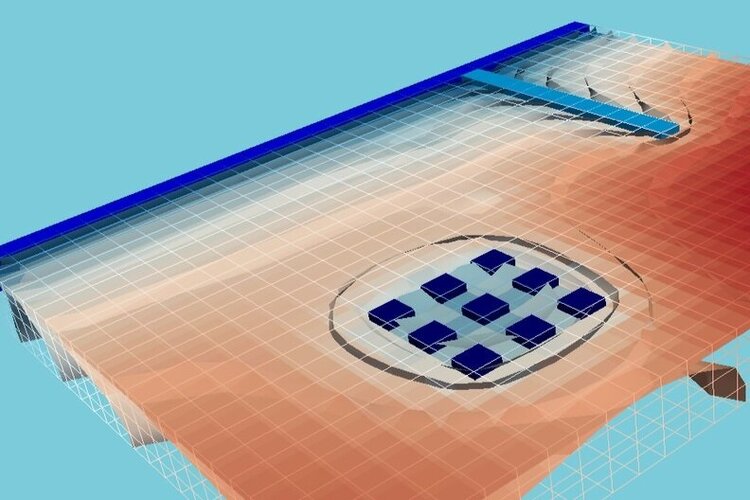This course allows acquired knowledge of the open source programming language to construct model input files, run the model, and read and plot simulation results.
Objectives
The development of the course will allow the application of these groundwater modeling tools with Flopy and Python. In this course the student will learn:
Know the Python and Flopy environment.
Perform operations in Python and Flopy for hydrogeological purposes.
Analyze and spatially represent hydrogeological and model information with Python and Flopy.
Course content
Session 1: Introduction to Flopy
Exercise 1:
Introduction to Flopy,
Basic commands of Flopy
Basic construction of steady state model with Flopy
Exercise 2
Analysis basic model.
Graphical representation of model results whit Flopy.
Session 2: Time Varying conditions
Exercise 3:
Insert boundary conditions with Flopy (WEL, RIV)
Basic construction of transient model.
Analyze model results.
Plot hydraulic heads an flow directions.
Exercise 4:
Varying conditions in a transient model.
Insert hydrogeologic parameters: Ss and Sy.
Interactive representation of groundwater level
Use Pandas to represent observed values.
Session 3: Particle tracking and DISV grid
Exercise 5:
Introduction to MODFLOW 6 in Flopy.
Create a particle tracking model.
Generate refinement with grid “DISV”.
Exercise 6:
Simulation of particle tracking with MODPATH 7.
Generate refinement with “quadtree” and gridgen.
Analyze particle tracking as a function of time.
Session 4: Advanced packages and observations
Exercise 7:
Implementation of Streamflow Routing (SFR) and Multiaquifer Well (MAW) packages.
Coupling of multi-aquifer wells.
Extraction of river levels by cells.
Interrelation between wells and river.
Session 5: Triangular meshes and 3D anisotropy
Exercise 8:
Three-dimensional anisotropy with XT3D
Implementation of a flow model with triangular grids
Session 6: Regional modeling
Exercise 9:
Definition of spatial coordinate systems
Import and intersection of shapefiles in the grid
Coupling NWT to simulation
Final Exam
Methodology
Here are some details of each methodology:
Manuals and files for the exercises will be delivered.
The course will be developed by videos on private web platform.
There is online support for questions regarding the exercises developed in the course.
Digital certificate available at the end of the course.
Video of the classes will be available for 2 months.
To receive the digital certificate you must submit the exercises after 1 month.

- Teacher: Saul Montoya